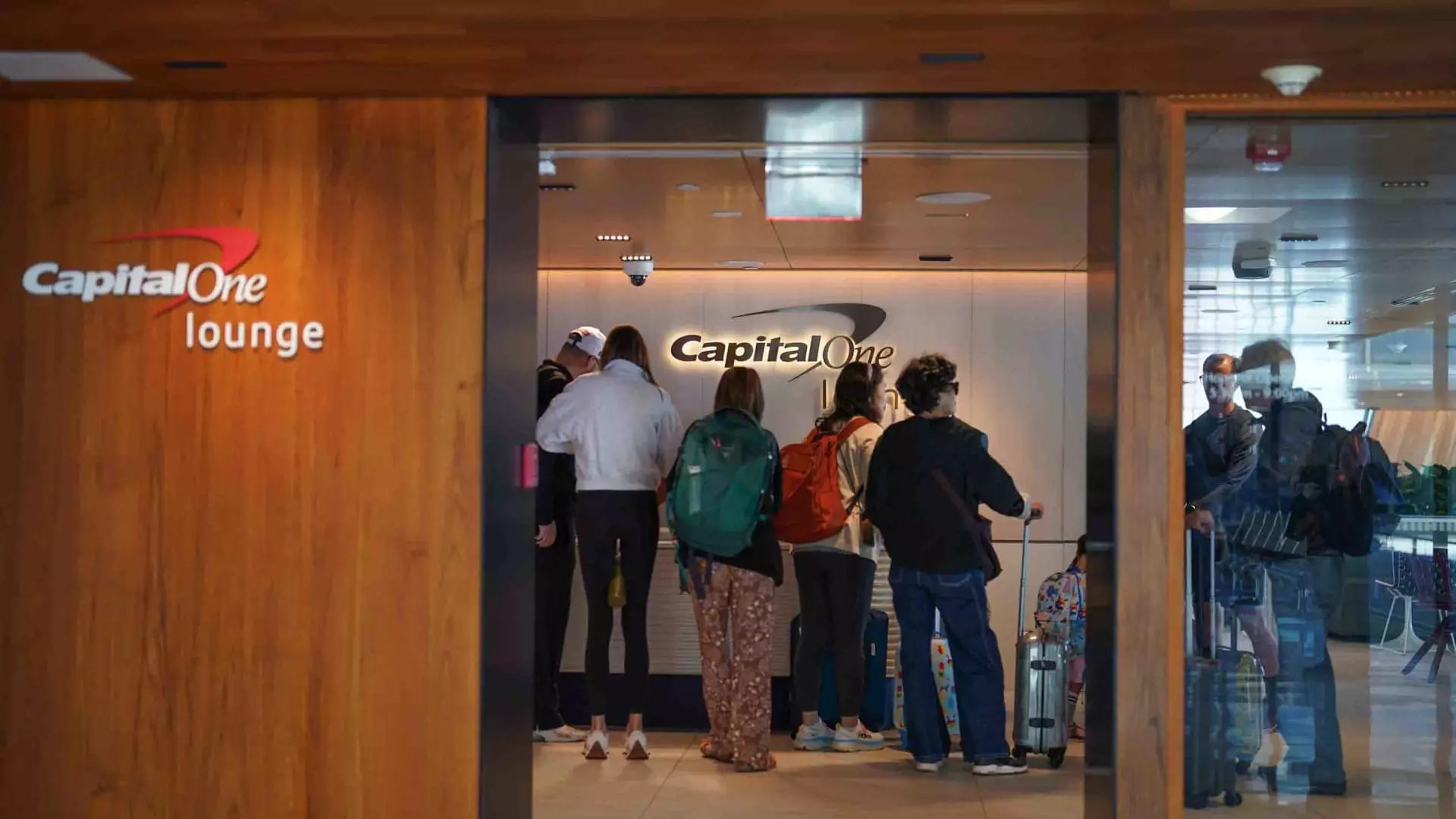In recent years, the accessibility of once-inaccessible luxury experiences has shifted dramatically. Many people would have seen discounted airplane tickets as a sign to travel more frequently; however, a sneaky trend is redefining what “luxury” means at airports. Airport lounges, once havens of tranquility and exclusivity for weary travelers, are now becoming expensive enclaves that are not easily reachable without significant expenditures. Capital One’s new policies regarding lounge access epitomize this shift, signaling that even in an age of consumer accessibility, the cost of luxury is rising at alarming rates.
Capital One’s Strategic Shift: Pricing Luxury Out of Reach
Starting February 1, 2024, the beloved benefits of the Venture X and Venture X Business cards will transform markedly. No longer will cardholders be able to accompany guests without incurring hefty fees: the price of guest access has jumped to $45 per adult per visit and $25 for minors. The annual charge for additional cardholders now stands at $125 – a hefty sum that alienates families and groups who once enjoyed the pampered experience of lounge access together. Such drastic changes are not merely market adjustments; they reflect an unsettling trend of luxury being commodified to the point where it distances the average traveler.
More dramatically, it now requires a staggering $75,000 annual expenditure just to grant two complimentary guests access. This move mirrors legislation seen in other high-end financial institutions like American Express but raises a crucial question: are we witnessing a trend away from the average consumer being able to enjoy the fruit of their loyalty programs? For those who can afford such extravagance, it’s almost a ‘pay to play’ model that will create barriers rather than a culture of inclusivity.
The Price of Popularity: Lounge Overcrowding Crisis
In addressing the issue of overcrowding, Capital One’s adjustments reveal a deeper irony: in striving to maintain an exclusive experience, they inadvertently risk losing the very essence of comfort and luxury they promote. Their statement indicates an awareness of their clientele’s frustration when faced with waiting times that often exceed those at airport terminals. It prompts one to wonder: at what point do the gatekeepers of these exclusive spaces become themselves overcrowded?
What should have been a serene hiding spot in a hectic airport is devolving into a glorified waiting area, no different than the public chairs outside the gates. The acknowledgment that lounges have become “victims of their own success” underscores the responsibility of credit card companies to foster a more balanced ecosystem—one that prioritizes the customer experience over profit margins.
The Shift in Perception: Are Lounges Worth the Investment?
With annual fees like Capital One’s $395 for the Venture X card still appealing compared to other offerings around $550-$695, consumers need to evaluate if the cushy lounge experience is worth the incremental costs attached. For many, the allure of immediate access may turn sour when one recognizes that ‘premium’ access comes wrapped in layers of fees, stripping the travel experience of the joy that once came with these luxury services.
In a world where experience often trumps material luxury, the growing costs tied to airport lounge access could push potential customers away. It raises an interesting point: Is eliminating complimentary access ultimately counterproductive, antagonizing loyal users who contributed to the brand’s rise?
The Impact of Policy Changes Across Airlines
Additionally, it’s essential to note how airlines are also shifting in response to rising demand. Delta has restructured its lounge access model, eliminating unlimited visits in favor of caps—a variation of Capital One’s approach that shows a concerted effort to maintain a veneer of exclusivity. American Airlines and United Airlines are similarly expanding, yet this expansion occurs alongside prohibitive access, pushing customers toward a status quo of only the affluent being able to enjoy the perks that these lounges once represented for all.
The essence of luxury travel is swiftly transforming from an inclusive experience into a starkly exclusive club—a transition that arguably undermines the spirit of the travel community. As travelers become more discerning, it remains to be seen how brands will reconcile their desire for exclusivity with the continued appeal of travel as a shared experience. The allure of luxury travel is passionate, yet if it becomes too estranged from the average consumer, the risk for these companies is alienation, reducing travel to just another transactional experience, leaving behind its rich emotional tapestry.


Leave a Reply